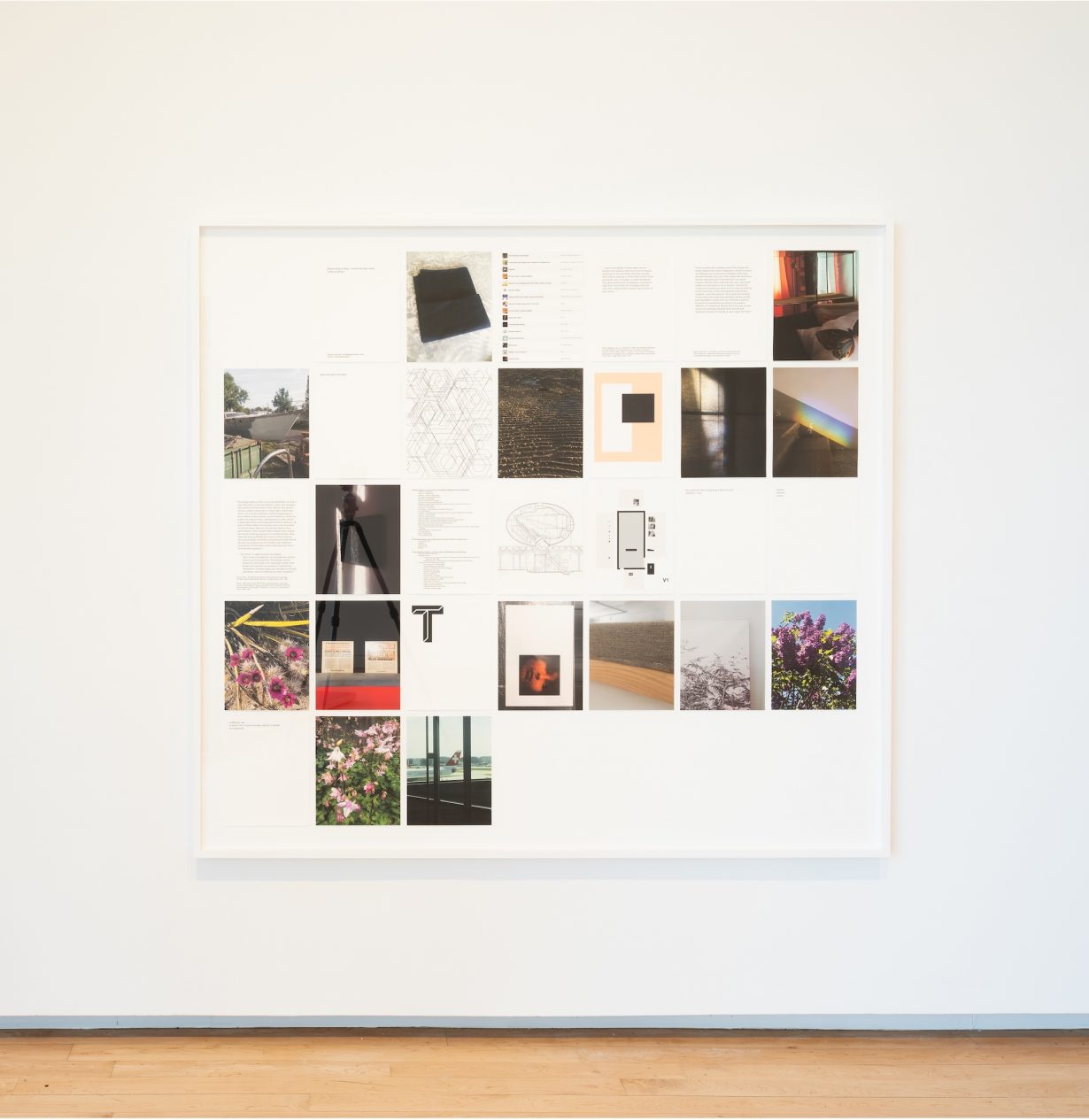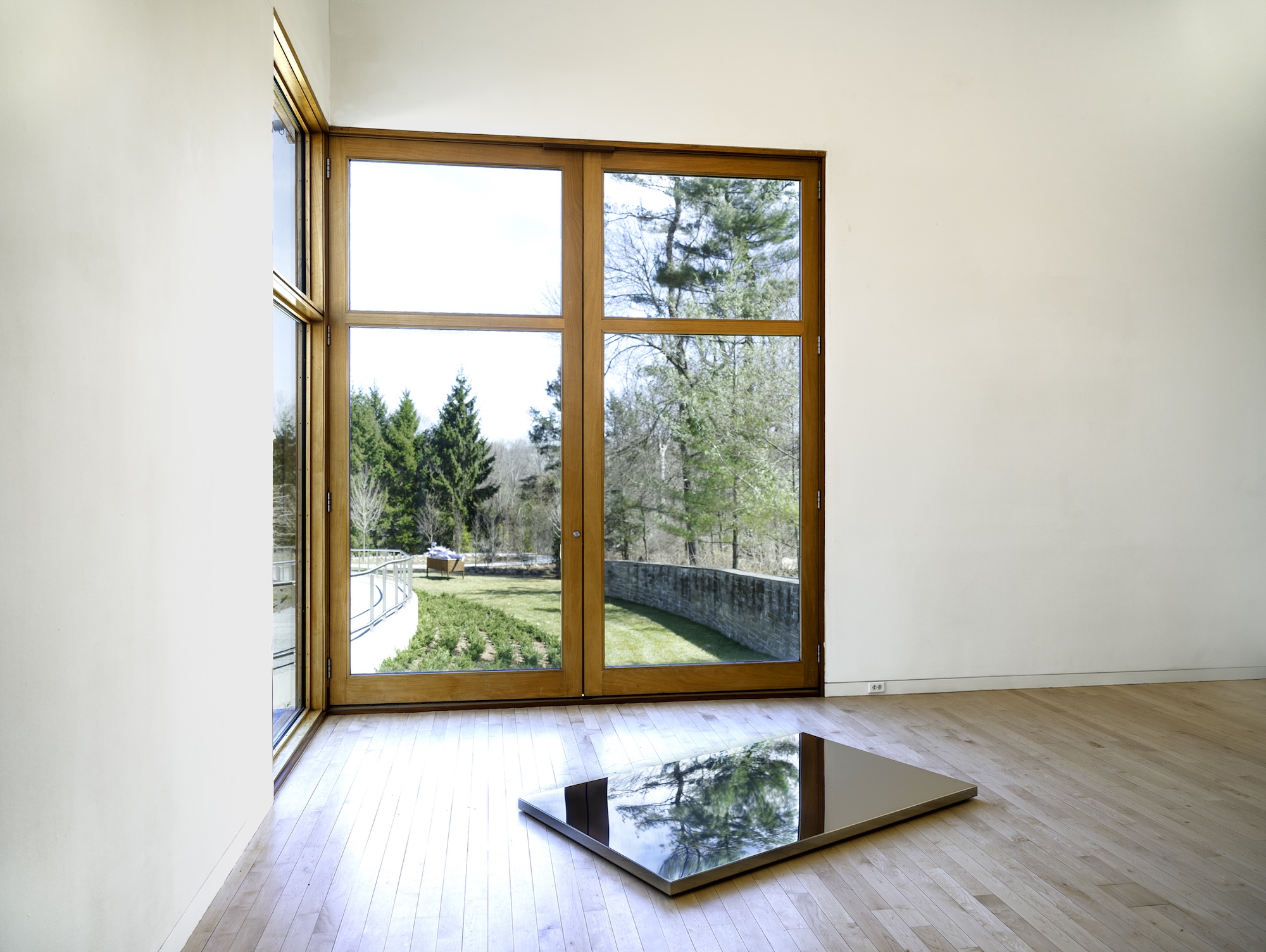The Austrian artist’s videos, installations and sound references explore how human-built structures index time’s passage
If you want a ‘touch grass’ experience, spend a leisurely afternoon with this understated gem by Martin Beck. The exhibition responds to the proto-ambient music of the late American sound engineer and photographer Irving Teibel’s environments series (1969–79), comprising albums of sounds such as birdsong and thunderstorms. The latter garnered substantial media attention during the 1970s, sparking public appreciation for field recordings. Beck, an Austrian artist known for multimedia exhibitions that self-consciously address exhibition design, uses film sequences set to Teibel’s recordings, as well as objects including a curtain and a mirror that augment the museum’s architecture, to convey how human-built structures index time’s passage.
The exhibition centres on in place (environments) (2020), an 11-part video projection, each part 11 minutes long, and each corresponding to the 11 albums of environments. In each part Beck’s camera remains fixed on views from inside his desert home in Joshua Tree, California. About half these look onto the desert through a window or open door, while the others portray solely interior spaces. The only action that transpires, other than the very occasional passing fly, rabbit or bird, is the sunlight’s incremental progress across the spaces. The video begins at sunrise and jumps forward chronologically until it reaches sunset. Each part is shot in real time.

Teibel’s soundtracks feel physically enveloping, and the minor onscreen occurrences – a gradually yellowing wall, an automatic porch light that switches on as night descends, the scene changes between sections – assume outsize dramatic weight. The experience of viewing and listening renders time’s passage uniquely tangible, as if it were washing over you like a stream. In another gallery, a testimonial on the cover of one of Teibel’s environments albums, which Beck has placed on a linen-covered shelf as part of the work Set/Setting (SD66004, SD66005) (2021), reads ‘Even better than the real thing’. Other blurbs express how Teibel’s recordings have improved listeners’ moods as well as their productivity, yet Beck doesn’t repurpose the soundtracks for pragmatic ends. Instead, his design choices, especially the disjunct between in place’s visuals and sounds, call attention to their own artifice. In doing so, Beck questions the utilitarian self-help framework to which the album blurbs attest.
Framing gestures abound throughout, highlighting the exhibition’s construction. in place’s many windows and doors frame the outside world, as do the Light and Space-like mirror (183 × 113, 2014), positioned on the floor near a window and capturing upside-down garden views. Likewise, the translucent Curtain (2018/25) that bifurcates the same gallery space is installed in pleasing dialogue with the Aldrich’s interior architecture and exterior landscape. Four oversize graphite drawings of fern patches, in which every inch of the paper has been packed with dark plants, evince a lushness that’s analogous to Teibel’s dense soundscapes. But it’s the diaristic exercises in working forwards (April 1–30, 2024) (2024) – one month of the artist’s daily drawings and jottings, such as an architectural diagram or the words ‘again and again and again’ on an otherwise blank page, arranged into a calendar-shaped grid – that encapsulate the exhibition’s poetic ambitions. Whatever the medium, Beck frames the prosaic record of time’s passage such that it feels both newly perceptible and strangely familiar.
…for hours, days, or weeks at a time at The Aldrich Contemporary Art Museum, Ridgefield, CT, through 5 October
From the Summer 2025 issue of ArtReview – get your copy.
